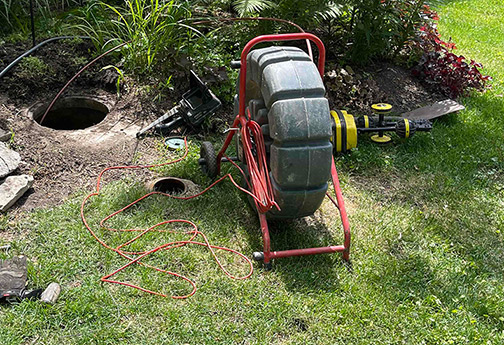
Sewer cameras help maintain the structural soundness and function of older pipe
systems by offering a non-invasive way to diagnose problems in these vulnerable
networks without subjecting them to the risk of further damage. According to Keyrenter
Boise, sewer cameras can detect even the smallest changes in historic plumbing
systems that can potentially lead to costly emergencies.
This matters because older plumbing systems with clay or cast iron pipes are delicate
and often less accessible than their modern equivalents. Using traditional methods that
involve excavation to inspect these systems for damage often do nothing but worsen
the very problems they try to solve. Traditional methods disturb pipes and harm them in
the process.
But with sewer camera inspections, this is not the case. A tiny specialized camera is
introduced into the pipe channel using access points such as floor drains and sewer
cleanouts. Using a flexible fiber optic cable, this waterproof camera navigates through
the sewer line. In that process, it captures a high-definition video of the pipe channel.
This high-resolution video is streamed to a monitor above ground, allowing a
professional plumber to get a detailed view of the inside of the pipe in real time. For
aging infrastructure such as historic plumbing systems, sewer camera inspection makes
it possible to detect problems with pinpoint accuracy. This prolongs the service life of
these aging systems.
Common problems in historic plumbing systems
Due to the effects of time and environment on their pipe materials, older plumbing
systems are more vulnerable to the following problems:
Clogs and blockages: Clogs and blockages are more common in older
plumbing systems due to corrosion and rust. The shed materials can accumulate
in the pipe channels, accelerating buildup and making the system more
susceptible to clogs and blockages.
Tree root intrusion: Older pipe systems are more vulnerable to tree root
intrusion because pipes are more likely to degrade and become weak. Plant
roots can exploit these corroded spots, tiny cracks, or weak joints to invade the
system.
Corrosion and deterioration: Materials like cast iron and clay have a greater
potential to degrade over time, with the result that rust builds up inside the
system and pipe surfaces start to flake off. Eventually, this can severely narrow
the pipe’s diameter or even cause collapse.
Pipe misalignment and collapse: In addition to corrosion and degradation,
ground movement and construction activities above the location of the pipe
network can cause older plumbing systems to collapse or shift. If this happens,
the system will be subject to repeated clogs or total blockage.
Bellied or sagging pipes: In metal pipes, such as cast-iron plumbing, this
problem is often caused by the buildup of grease within the system. Pipe leaks
and erosion can also wash away the surrounding soil, denying the plumbing of its
support and causing a section of it to collapse.
How does a sewer camera inspection help to solve these
problems?
With pipe materials like PVC, it is easy to get away with guesswork. But when working
with older plumbing systems, like clay, the margin for error is slim. Historic plumbing
systems may have problems that have been developing over several decades, so small
mistakes can lead to disastrous consequences.
That’s why the right inspection method for such plumbing systems must offer the
following benefits:
- Preserves original materials
Older plumbing systems contain brittle materials that can be irreparably damaged by
traditional inspection methods. Sewer camera inspection does not carry this risk; it allows precise diagnosis of system problems without disturbing the pipes or the surrounding soil. - Eliminates the need for invasive excavation
A sewer camera inspection eliminates the costs that come with traditional sewer
inspection methods, which require digging. These old methods not only operate by
guesswork. They also leave massive destruction in their wake, which can cost
thousands of dollars in lost manhours and actual cash. - Prevents costly failures
Small problems in older plumbing systems can quickly develop into full-scale pipe
collapse. These apparently insignificant issues can be detected using a sewer camera.
This helps owners of such aging infrastructure to minimize repair costs and avoid
premature replacement of their sewer line. - Accurate location for targeted repairs
Sewer cameras are equipped with radio transmitters that communicate with a locator
device on the surface to help plumbers pinpoint the exact location of highlighted
problems in a plumbing network. This makes it possible to perform targeted repairs,
which are usually more cost-effective. - Suitable for preventative maintenance
Scheduled sewer camera inspections let you detect the problems in historic plumbing
systems before they escalate into costly emergencies. Instead of a reactive approach to
problems in the system, you can proactively plan your interventions in the system to
minimize cost and effort.
Finally, video footage from a sewer camera inspection provides irrefutable evidence of
the condition of a plumbing system when filing insurance claims for your property.

